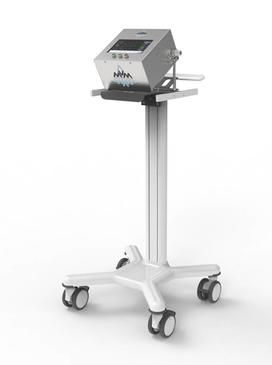Physics Professor and Colleagues Develop New Respirator For COVID
On March 7, physics professor Cristian Galbiati was on the Mediterranean island of Sardinia, helping to build a massive tower for purifying argon gas, when Italy announced regional lockdowns. The next day, he rushed home to Milan to rejoin his family, but before the second week of lockdown was over he began an entirely new project: designing a mechanical ventilator specifically to meet the needs of COVID-19 patients simply and cheaply. In a triumph for Galbiati — and the hundreds of particle physicists, engineers, and others around the world who dropped what they were doing to help — the ventilator was approved by the U.S. Food and Drug Administration May 1.

Galbiati leads a physics experiment called DarkSide-20k, a detector that will watch 55 tons of ultra-pure liquid argon for the telltale signs of dark-matter particles bouncing off the argon atoms. Such detectors — and the systems for purifying the argon that goes into them — must be built to exacting specifications to detect the elusive dark matter. To do that, he says, the project employs “the best talent available” for designing gas-handling systems in particle physics labs all across the world.
It became clear that this sort of talent might be helpful during the COVID epidemic, he says, when his brother, an emergency room physician in Milan, and his friend whose family owns a company that sells technical gasses, informed him of the looming worldwide shortage of ventilators. Over the weekend of March 20, Galbiati worked with a nearby medical-device manufacturer on some experiments to confirm whether a much-simplified ventilator could perform as needed. Then, he says, he contacted a few friends involved in the DarkSide collaboration, “and the day after we were already drafting a paper and making plans for the ventilator.” From there, the team worked day and night — with researchers in one time zone picking up the work as their colleagues in other time zones went to bed — to design and test the systems for managing airflow through the machine. Large-scale manufacture of the MVM began in Italy in early May, and manufacture is beginning soon in Canada, whose government has ordered 10,000 units pending regulartory approval, and the U.S.
It was “heartening,” says Galbiati, not only to see so many researchers in basic physics turn their attention to a lifesaving project, but also to collaborate across borders when so many nations were restricting travel. “When the barriers between states came up,” says Galbiati, “we were able to keep the research international, traveling at the speed of light over the fibers of the internet.”












No responses yet